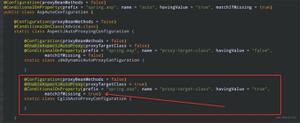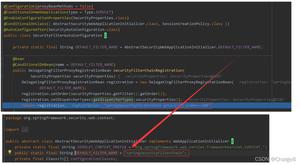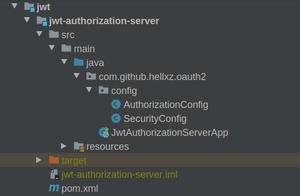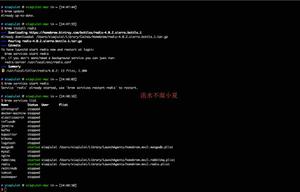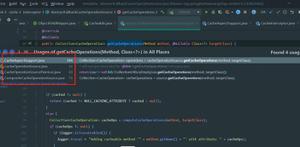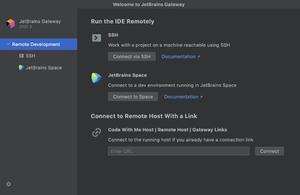使用Spring Security从JWT令牌中提取当前登录的用户信息
我已经使用Spring Security Oauth2实现了JWT和LDAP身份验证。似乎工作正常,我可以使用LDAP凭据登录。
现在,有一个要求,我需要使用当前登录的用户信息将详细信息保存在数据库中-特别是当该用户添加/更新新记录时。我试图使用Spring安全方式使用
SecurityContextHolder.getContext().getAuthentication().getDetails()但它不会返回我在JWT中拥有的所有信息。它只是返回远程IP,JWT令牌值和经过验证的true。它甚至不返回name()。
我是JWT的新手,所以不确定是否需要通过读取该令牌以及我们如何实现它来提取它。
任何指针将不胜感激。
谢谢。
回答:
您需要做的第一件事是在创建JWT时将用户信息存储在JWT内,然后在使用JWT时将其提取。我有一个类似的情况,我通过扩展双方解决它TokenEnhancer和JwtAccessTokenConverter。
我使用TokenEnhancer来将我的扩展类型的主体嵌入CustomUserDetailsJWT其他信息中。
public class CustomAccessTokenEnhancer implements TokenEnhancer { @Override
public OAuth2AccessToken enhance(OAuth2AccessToken accessToken, OAuth2Authentication authentication) {
Authentication userAuthentication = authentication.getUserAuthentication();
if (userAuthentication != null) {
Object principal = authentication.getUserAuthentication().getPrincipal();
if (principal instanceof CustomUserDetails) {
Map<String, Object> additionalInfo = new HashMap<>();
additionalInfo.put("userDetails", principal);
((DefaultOAuth2AccessToken) accessToken).setAdditionalInformation(additionalInfo);
}
}
return accessToken;
}
}
然后Authentication在处理经过身份验证的请求时在构建对象时手动提取扩展的主体。
public class CustomJwtAccessTokenConverter extends JwtAccessTokenConverter { @Override
public OAuth2Authentication extractAuthentication(Map<String, ?> map) {
OAuth2Authentication authentication = super.extractAuthentication(map);
Authentication userAuthentication = authentication.getUserAuthentication();
if (userAuthentication != null) {
LinkedHashMap userDetails = (LinkedHashMap) map.get("userDetails");
if (userDetails != null) {
// build your principal here
String localUserTableField = (String) userDetails.get("localUserTableField");
CustomUserDetails extendedPrincipal = new CustomUserDetails(localUserTableField);
Collection<? extends GrantedAuthority> authorities = userAuthentication.getAuthorities();
userAuthentication = new UsernamePasswordAuthenticationToken(extendedPrincipal,
userAuthentication.getCredentials(), authorities);
}
}
return new OAuth2Authentication(authentication.getOAuth2Request(), userAuthentication);
}
}
以及将AuthorizationServer其捆绑在一起的配置。
@Configuration@EnableAuthorizationServer
public class AuthorizationServerConfig extends AuthorizationServerConfigurerAdapter {
@Autowired
private AuthenticationManager authenticationManager;
@Autowired
private UserDetailsService userDetailsService;
@Autowired
private DataSource dataSource;
@Bean
public JwtAccessTokenConverter accessTokenConverter() {
CustomJwtAccessTokenConverter accessTokenConverter = new CustomJwtAccessTokenConverter();
accessTokenConverter.setSigningKey("a1b2c3d4e5f6g");
return accessTokenConverter;
}
@Bean
public TokenStore tokenStore() {
return new JwtTokenStore(accessTokenConverter());
}
@Bean
@Primary
public DefaultTokenServices tokenServices() {
DefaultTokenServices defaultTokenServices = new DefaultTokenServices();
defaultTokenServices.setTokenStore(tokenStore());
defaultTokenServices.setSupportRefreshToken(true);
return defaultTokenServices;
}
@Bean
public TokenEnhancer tokenEnhancer() {
return new CustomAccessTokenEnhancer();
}
@Bean
public PasswordEncoder passwordEncoder() {
return new BCryptPasswordEncoder();
}
@Override
public void configure(ClientDetailsServiceConfigurer clients) throws Exception {
clients.jdbc(dataSource).passwordEncoder(passwordEncoder());
}
@Override
public void configure(AuthorizationServerEndpointsConfigurer endpoints) throws Exception {
TokenEnhancerChain tokenEnhancerChain = new TokenEnhancerChain();
tokenEnhancerChain.setTokenEnhancers(Arrays.asList(tokenEnhancer(), accessTokenConverter()));
endpoints
.tokenStore(tokenStore())
.tokenEnhancer(tokenEnhancerChain)
.authenticationManager(authenticationManager)
.userDetailsService(userDetailsService);
}
@Override
public void configure(AuthorizationServerSecurityConfigurer security) throws Exception {
security.passwordEncoder(passwordEncoder());
security.checkTokenAccess("isAuthenticated()");
}
}
然后,我可以像这样访问我的资源控制器中的扩展主体
@RestControllerpublic class SomeResourceController {
@RequestMapping("/some-resource")
public ResponseEntity<?> someResource(Authentication authentication) {
CustomUserDetails userDetails = (CustomUserDetails) authentication.getPrincipal();
return ResponseEntity.ok("woo hoo!");
}
}
希望这可以帮助!
以上是 使用Spring Security从JWT令牌中提取当前登录的用户信息 的全部内容, 来源链接: utcz.com/qa/435959.html

